Contents

This is a list of British women physicians.

This is a list of British women physicians.

Dr. Elizabeth Garrett Anderson was an English physician and suffragist. She was the first woman to qualify in Britain as a physician and surgeon. She was the co-founder of the first hospital staffed by women, the first dean of a British medical school, the first woman in Britain to be elected to a school board and, as mayor of Aldeburgh, the first female mayor in Britain.

Sophia Louisa Jex-Blake was an English physician, teacher, and feminist. She led the campaign to secure women access to a university education, when six other women and she, collectively known as the Edinburgh Seven, began studying medicine at the University of Edinburgh in 1869. She was the first practising female doctor in Scotland, and one of the first in the wider United Kingdom of Great Britain and Ireland; a leading campaigner for medical education for women, she was involved in founding two medical schools for women, in London and Edinburgh, at a time when no other medical schools were training women.

Elizabeth Blackwell was a British and American physician, notable as the first woman to receive a medical degree in the United States, and the first woman on the Medical Register of the General Medical Council for the United Kingdom. Blackwell played an important role in both the United States and the United Kingdom as a social reformer, and was a pioneer in promoting education for women in medicine. Her contributions remain celebrated with the Elizabeth Blackwell Medal, awarded annually to a woman who has made a significant contribution to the promotion of women in medicine.
The London School of Medicine for Women (LSMW) established in 1874 was the first medical school in Britain to train women as doctors. The patrons, vice-presidents, and members of the committee that supported and helped found the London School of Medicine for Women wanted to provide educated women with the necessary facilities for learning and practicing midwifery and other branches of medicine while also promoting their future employment in the fields of midwifery and other fields of treatment for women and children.

The Elizabeth Garrett Anderson and Obstetric Hospital and its predecessor organisations provided health care to women in central London from the mid-Victorian era. It was named after Elizabeth Garrett Anderson, one of Britain's first female physicians, and its work continues in the modern Elizabeth Garrett Anderson wing of University College Hospital, part of UCLH NHS Foundation Trust.

Mary Edith Pechey was one of the first women doctors in the United Kingdom and a campaigner for women's rights. She spent more than 20 years in India as a senior doctor at a women's hospital and was involved in a range of social causes.
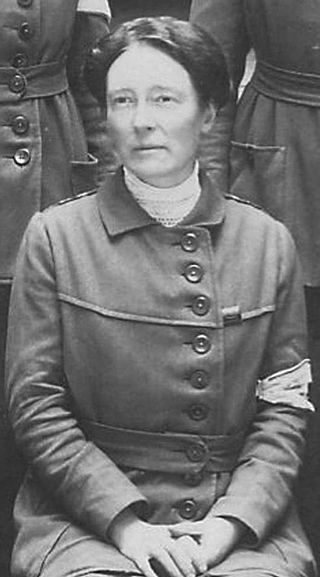
Louisa Garrett Anderson, CBE was a medical pioneer, a member of the Women's Social and Political Union, a suffragette, and social reformer. She was the daughter of the founding medical pioneer Elizabeth Garrett Anderson, whose biography she wrote in 1939.
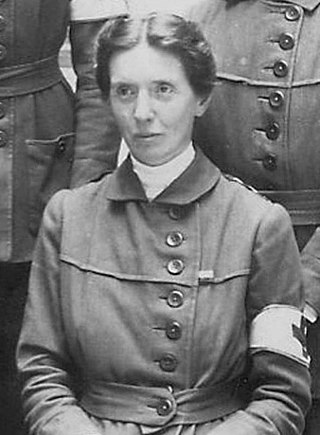
Flora Murray was a Scottish medical pioneer, and a member of the Women's Social and Political Union suffragettes. From 1914 to the end of her life, she lived with her partner and fellow doctor Louisa Garrett Anderson.
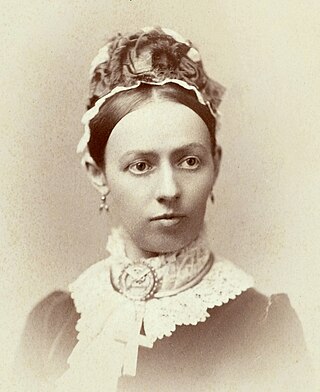
Dame Mary Ann Dacomb Scharlieb, DBE was a pioneer British female physician and gynaecologist in the late 19th/early 20th centuries. She had worked in India and by her persistence she returned to the UK to become a qualified doctor. She returned to Madras and eventually lectured in London. She was the first woman to be elected to the honorary visiting staff of a hospital in the UK and one of the most distinguished women in medicine of her generation.
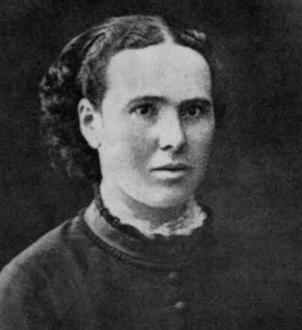
Frances Elizabeth Hoggan was a Welsh doctor and in 1870 became the first woman from the UK to receive a doctorate in medicine from any university in Europe. She was a pioneering medical practitioner, researcher and social reformer – and the first female doctor to be registered in Wales. She and her husband opened the first husband-and-wife medical practice in Britain. She was honoured with Wales' 11th Purple Plaque in her birth-town of Brecon in March 2023.
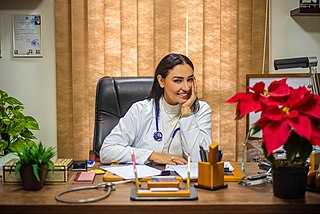
The presence of women in medicine, particularly in the practicing fields of surgery and as physicians, has been traced to the earliest of history. Women have historically had lower participation levels in medical fields compared to men with occupancy rates varying by race, socioeconomic status, and geography.

Maud Mary Chadburn, was one of the earliest women in the United Kingdom to pursue a career as a surgeon. She also co-founded the South London Hospital for Women and Children in 1912 with fellow surgeon Eleanor Davies-Colley.
Jerusha Jacob Jhirad FRCOG, MBE was an Indian physician.

Alexandra Mary Chalmers Watson CBE,, known as Mona Chalmers Watson, was a British physician and head of the Women's Army Auxiliary Corps. The first woman to receive an MD from the University of Edinburgh, she helped found the Elsie Inglis Hospital for Women, was the first president of the Edinburgh Women's Citizen Association, a staff physician and later senior physician at the Edinburgh Hospital and Dispensary for Women and Children, and co-edited the Encyclopaedia Medica with her husband, Douglas Chalmers Watson. At the time of her death in 1936, she was president of the Medical Women's Federation, having been elected May 1935.

The Scottish Women's Hospital at Royaumont was a medical hospital during World War I active from January 1915 to March 1919 operated by Scottish Women's Hospitals (SWH), under the direction of the French Red Cross and located at Royaumont Abbey. The Abbey is a former Cistercian abbey, located near Asnières-sur-Oise in Val-d'Oise, approximately 30 km north of Paris, France. The hospital was started by Dr Frances Ivens and founder of SWH, Dr Elsie Maud Inglis. It was especially noted for its performance treating soldiers involved in the Battle of the Somme.
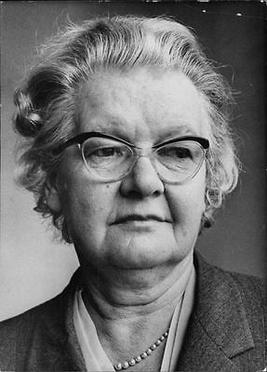
Dame Albertine Louisa Winner was a British physician and medical administrator. After graduating from University College Hospital Medical School, Winner practised at the Elizabeth Garrett Anderson Hospital, the Mothers' Hospital in Clapton, and Maida Vale Hospital for Nervous Diseases.

Eleanor Elizabeth Bourne (1878–1957) was the first Queensland woman to study medicine. She also was one of only 15 women doctors in Australia who volunteered for service in World War I.
Isabella Macdonald Macdonald (1856–1947) was one of the first women to graduate as a doctor after training in the United Kingdom; she was awarded a Bachelor of Medicine and a Licence of the Society of Apothecaries in 1888, from the London School of Medicine for Women. She went on to have a long career, including as a consultant at the Elizabeth Garrett Anderson Hospital.
The Victorian Medical Women's Society (VMWS) is the longest-running association of women medical practitioners and medical students. It was established in Melbourne, Australia in 1895/1896 and is one of the oldest active medical organisations in the world. The aim of the society was to set a benchmark in women's health around Victoria, and to advance the professional development of medical women, through education, research, and the improvement of professional opportunities. The state-run society became affiliated with the national body, Australian Federation of Medical Women, and thereby the Medical Women's International Association.
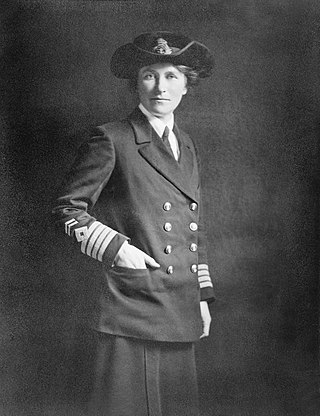
Dorothy Christian Hare, CBE was an English physician. She joined the Royal Army Medical Corps and Women's Royal Naval Service during the First World War where she became concerned about the treatment of venereal disease in women. Upon returning to England she established two hostels to improve conditions for such cases. Following a career at the Royal Free Hospital and the Elizabeth Garrett Anderson Hospital she became the third woman and first female general physician to be elected a fellow of the Royal College of Physicians.